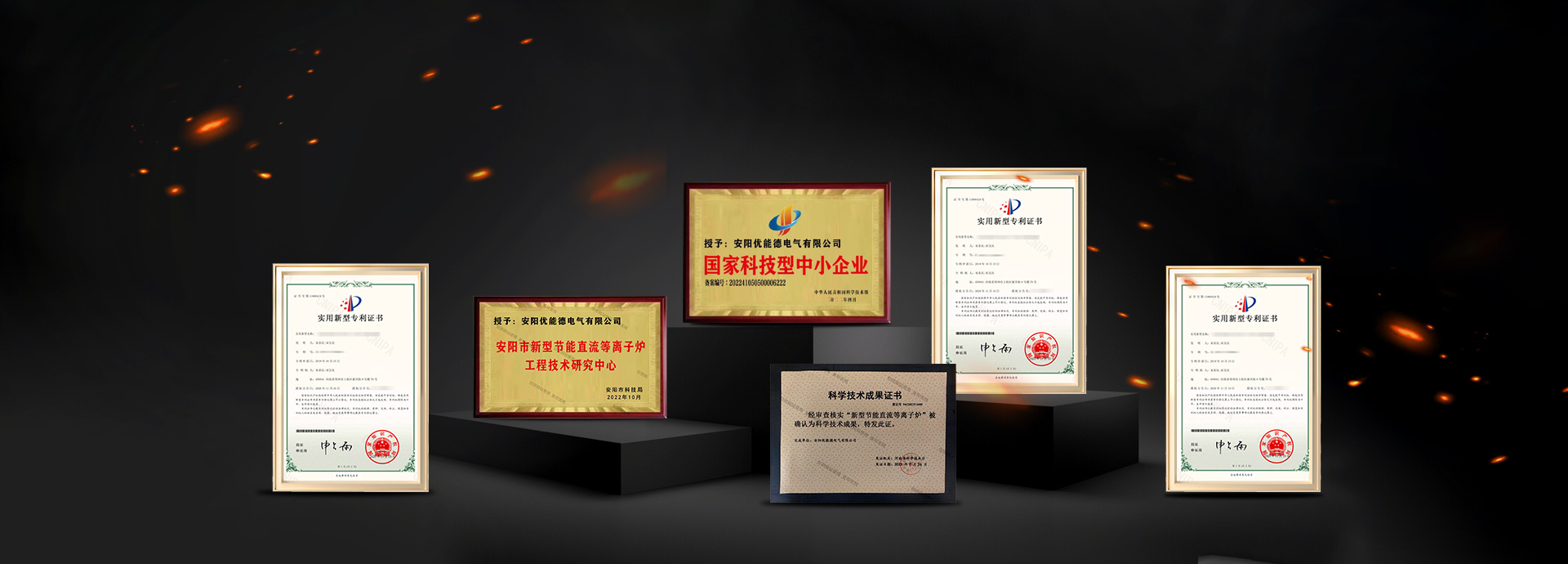Analysis and Introduction of the Causes of Electrode Accidents in Mineral Heating Furnaces!
Update Time: 2021-12-30 Follow: 3323
2、 Other phenomena: The fluidity index of the electrode paste exceeds 2.0, and the elongation rate exceeds 40.
3、 Root cause: The electrode paste influenza was too good, which caused the particles to shrink and loosen. The strength of some of the electrodes with more stones was slightly lower, and they were vulnerable to external force, while the more particles were vulnerable to the thermal stress of the electrode itself. The reason for the occurrence of two different accumulations of stone materials is due to different sintering methods.
Secondly, there are too many and too long ribs in the electrode cylinder, which are often seen in new furnaces
1. Sectional situation: The cross-section is divided into sections along the ribs and blooming.
.2、 Other phenomena: There are no abnormalities in the electrode paste inspection index values, but there are many phenomena such as dropping, branching, and turning after ignition.
3、 Root cause: For cases such as new furnace ignition, it is usually a problem with the electrode tube ribs. Too many, too dense, and too long ribs can cause the electrode paste to be separated into too many small pieces, resulting in a decrease in the overall strength of the electrode. In addition, the drilling form on the ribs is incorrect or the drilling is too small, which can also cause the electrode to fall off and crack.
3. The electrode paste has no fluidity or low fluidity, and the discrimination is based on the plasticity value of the electrode paste being less than 5%
1. Sectional condition: There are significant cracks on the section, and the appearance of the electrode paste is faintly visible.
.2、 Other phenomena: The fluidity index of the electrode paste is less than 1.0, and the plasticity value is less than 2.0.
3、 Root cause: The flowability index of the electrode paste is not very good, and it cannot fill the entire indoor space of the electrode cylinder, resulting in cracks and hanging paste, which reduces the overall strength of the electrode.
4. Melting of the top layer of the paste column
1. Section condition: The section is loose, with cracks, and some sections are leveled.
.2、 Other phenomena: Upon observation, it was found that the top layer of the paste column melted into a viscous substance. Before the electrode was cut off, the paste was added here during the actual operation of blowing the boiler tube. The difference between the shrinkage and looseness of this type of broken electrode and electrode paste depends on the normal flow of the electrode paste itself.
3、 Root cause: The heat transfer coefficient of the commonly used raw materials for electrode paste of large and medium-sized submerged arc furnace is high, and the top layer of the paste column is easy to melt. When the furnace is shut down for a long time, the electrode paste melted at the top layer will coagulate again. If the electrode paste is not added immediately, the whole process of electrode sintering will end. After the secondary temperature rise, the influenza of the electrode paste here will decline, and the electrode strength will be slightly low, leading to the hard break of the electrode.
Fifth, poor thermal shock resistance of electrode paste
1. Section condition: The section is leveled.
.2、 Other phenomena: The current changes significantly before the electrode is disconnected, while everything else is normal.
3、 Root cause: Changes in current can cause variations in the thermal properties of the resistors in the various components of the electrode itself, which can lead to thermal stress inside the electrode. When the thermal shock resistance of the electrode paste is weak, it can cause cracks. During the entire process of electrode sintering, a too fast sintering rate can also widen the temperature difference between the inside and outside of the electrode. When there are vertical cracks in the electrode cross-section and no branching phenomenon below, it can generally be distinguished that the thermal shock resistance of the electrode paste is weak.
6. External object protection
1. Sectional condition: flat, visible dirt.
.2、 Other phenomena: dirty materials are stored in the electrode paste during operation, the electrode cylinder is uncovered, and there is a relatively large amount of smoke and dust in the production workshop.
3、 Root cause: Dirty decoration blocks the normal fluidity of electrode paste, preventing the left and right electrodes from sintering into a whole, reducing electrode strength and causing rupture. 7. Black core soft breakage. 1. Sectional condition: The electrode section is flat near the surface, with a raised or lowered center circle.
2、 Nowadays, the electrode sintering is slow, while everything else is normal.
3、 Root cause: The electrode sintering is too slow, and the sintered core around the electrode of the gripper is not sintered. The strength of the sintered electrode is lower, and it is easy to break when it is subjected to strong external impact.
What are the problems with the preparation of recycled waste materials? Low carbon content and low slag alkalinity
1. Sectional condition: The electrode is severely corroded and bifurcates during operation, and the electrode significantly narrows from top to bottom.
.2、 Other phenomena: The electrode paste inspection is normal, the heating furnace temperature is low, the production volume is low, and the electrode is inserted too deeply.
3、 Root cause: Insufficient carbon in the recycled waste, severe corrosion of the electrode by the dissolved material, reduced overall strength of the narrowed electrode, and easy breakage when subjected to high impact from external forces.
9. Poor oxidation resistance of electrode paste
1. Sectional condition: The electrode is significantly narrowed, and the side air oxidation is more severe.
.2、 Other phenomena: The actual operation of the ore blast furnace is normal without any water seepage, the centrifugal fan application is unchanged, and there is no power outage.
3、 Root cause: Poor oxidation resistance of electrode paste. Excessive air oxidation can narrow the electrode and reduce its overall strength. When subjected to strong external forces, it is prone to breakage. The determination of weak oxidation resistance of electrode paste and corrosion of electrodes due to carbon deficiency is that the narrowing of the material surface is generally due to the presence of more carbon deficient elements, while the narrowing of the material surface is due to poor oxidation resistance of the electrode paste.
There are many accidents of soft and hard breaks in the electrodes of mineral heat furnaces, and they are also very complex. It is not possible to analyze the cause of accidents comprehensively from the cross-section alone. Therefore, before analyzing the cause in depth, it is necessary to ensure that the inspection index values of the electrode paste meet the standards, especially the strength. Only electrode paste that meets the strength standard needs to analyze the electrode cross-section. The amount of data provided by the electrode cross-section can objectively reflect what happened to the electrode during the entire sintering process, providing a way to analyze electrode safety accidents.
.For more analysis on the causes of electrode accidents in mineral heat furnaces, please follow the official website: http://www.ayynd.com/


